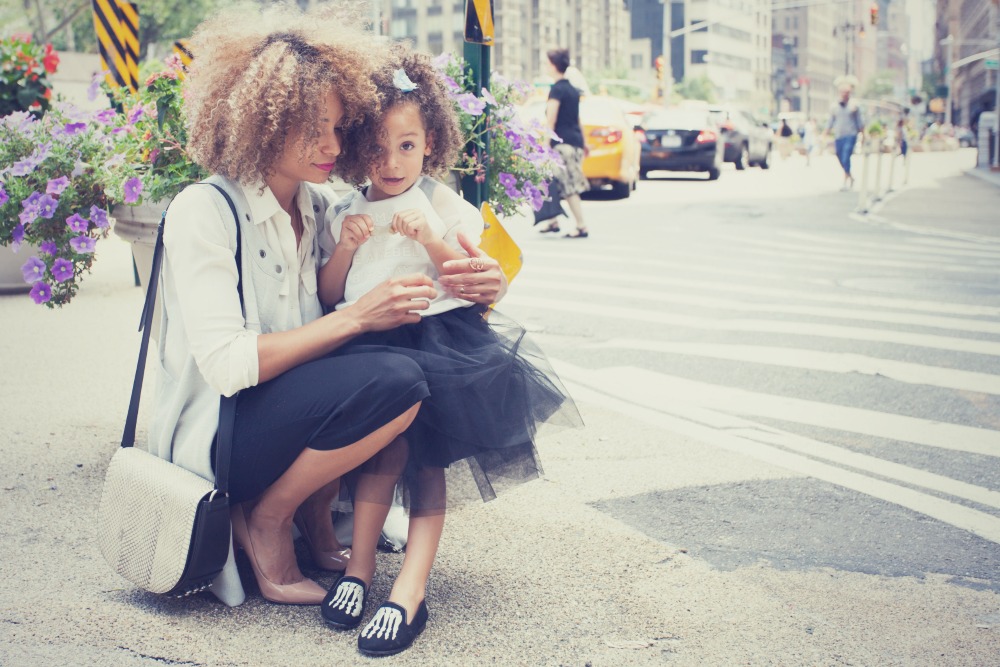The worry begins as a trickle in his mind. It develops momentum and drops into his body causing his palms to sweat, heart to race, and tummy to ache. Finally, your child’s worry erupts:
“Mommy, what if I have a new teacher in school?”
“Daddy, what if I can’t find someone to play with?”
The words hit you. You, too, begin to worry both vicariously for him and about your ability to quell the worry. No matter what your past experience, you give it your best shot.
You try reassurance: “Honey, everything is going to be OK, I promise.”
You invoke logic: “It wasn’t so bad last time, remember? That means this time it will be even easier.”
You lend strength: “You’re strong and brave. You have it in you to do this. I believe in you.”
You teach coping skills: “Take some deep breaths. Deep breathing will really help.”
The result? Your child still worries.
And you? You begin to feel exasperated, exhausted, helpless, and perhaps even hopeless.
If this is how you feel as the parent or caretaker of an anxious child, you are not alone. Do not give up hope, do not give up trying–you can and will find a way to reach your child.
Instead of focusing on the end goal of reducing the anxiety, begin with a powerful baby step. Build an empathetic connection with your child.
Note: If you’re feeling tired or even angry as a result of your recent experiences trying to help an anxious child, please do this before using any of the techniques below. Take out a sheet of paper and write down three of your child’s greatest strengths. Think of three examples where your child recently used his or her strengths. Keep this paper with you.
Next time your child comes to you feeling anxious, adopt one of these strategies:
Use the Fast-Food Rule
This simple rule was developed by author Harvey Karp. Karp reminds us that when we go to a fast food restaurant and order something through the drive through (e.g., “Can I have a burger and fries please?”) they always repeat back the order (e.g., “So you’d like a burger and fries, correct?”). Repeating back to someone what they are saying makes them feel heard and respected. What’s more is it builds an immediate connection.
Before you kick into problem-solving mode with an anxious child, repeat back to them with complete sincerity what they are expressing to you. Master this technique to validate their feelings and help them feel understood.
-
Tell a story about yourself
When your child comes to you with a worry (however irrational it may seem), close your eyes and draw out a past experience or feeling of your own that resembles what they are going through. When you open your eyes, say these three words: “I get it.” Then tell them your story and why you understand what they are feeling.
-
Be the calm you want to see in your child
Make a decision that you are going to respond to your child instead of reacting to them. A powerful way to respond is by listening intently and silently. After they are done explaining their worry (even if the explanation comes in the form of screaming), maintain your silence.
When the time is right, you can say, “I hear you and I’m here for you.” You can then invite them into your silence by holding hands, hugging, or leaning in. Children are very intuitive and can mimic the energy you exude. Do not underestimate the ripple effect these micro-moments of calm can have on your child’s well-being. In silence, you can deliberately cultivate a contagion of peace.
-
Remix a coping skill
When you feel your child is receptive to learning a coping skill, remix the ordinary into something fun. Instead of deep breathing, for example, maybe your child wants to try breathing like Darth Vader. If your child is young, perhaps they want to take in a deep breath and blow out birthday candles.
About the Author: Renee Jain
 Renee Jain is an award-winning tech entrepreneur turned speaker and certified life coach. She also holds a masters in applied positive psychology from the University of Pennsylvania. Renee specializes in cultivating skills of resilience in both adults and children. Her passion is taking research-based concepts and transforming them into fun and digestible learning modules. For children, she has created one-of-a-kind anxiety relief programs at GoZen! delivered via engaging animated shorts.
Renee Jain is an award-winning tech entrepreneur turned speaker and certified life coach. She also holds a masters in applied positive psychology from the University of Pennsylvania. Renee specializes in cultivating skills of resilience in both adults and children. Her passion is taking research-based concepts and transforming them into fun and digestible learning modules. For children, she has created one-of-a-kind anxiety relief programs at GoZen! delivered via engaging animated shorts.


![It’s the simple things that are everything. We know play, conversation, micro-connections, predictability, and having a responsive reliable relationship with at least one loving adult, can make the most profound difference in buffering and absorbing the sharp edges of the world. Not all children will get this at home. Many are receiving it from childcare or school. It all matters - so much.
But simple isn’t always easy.
Even for children from safe, loving, homes with engaged, loving parent/s there is so much now that can swallow our kids whole if we let it - the unsafe corners of the internet; screen time that intrudes on play, connection, stillness, sleep, and joy; social media that force feeds unsafe ideas of ‘normal’, and algorithms that hijack the way they see the world.
They don’t need us to be perfect. They just need us to be enough. Enough to balance what they’re getting fed when they aren’t with us. Enough talking to them, playing with them, laughing with them, noticing them, enjoying them, loving and leading them. Not all the time. Just enough of the time.
But first, we might have to actively protect the time when screens, social media, and the internet are out of their reach. Sometimes we’ll need to do this even when they fight hard against it.
We don’t need them to agree with us. We just need to hear their anger or upset when we change what they’ve become used to. ‘I know you don’t want this and I know you’re angry at me for reducing your screen time. And it’s happening. You can be annoyed, and we’re still [putting phones and iPads in the basket from 5pm] (or whatever your new rules are).’♥️](https://www.heysigmund.com/wp-content/plugins/instagram-feed-pro/img/placeholder.png)
Thanks for sharing this article. It takes a neural stance on a difficult subject and caringly provides real life examples for parents or single adults like myself trying to grasp at empathy and compassion.
I really like the “tell a story about yourself” technique — I’m going to try this next!
This is so good! Thank you! You nailed it, describing all the steps I go through (unsuccessfully) when my daughter is anxious or scared. These are great tips that I am going to start using today.
In addition to having an anxious child myself, I also work for ForEveryMom.com, a parenting site – and I’d love to share this post with our readers with your permission. Would you let us republish this on our site, giving you full credit as author, linking back to the original post here, and including your bio and head shot? Let me know if you have questions! Thank you!
Mary so pleased you love the article. You’ll have to get in touch with the author, Renee, for permission to reprint. It’s her article so she owns the copyright. Her details are in the bio.
LOVE this line: In silence, you can deliberately cultivate a contagion of peace.
Great piece, concrete tips, I’m on it… TONIGHT!